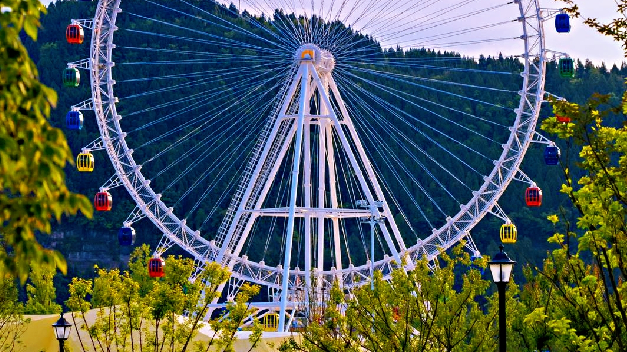- Albanian
- Arabic
- Belarusian
- Bengali
- Czech
- English
- French
- German
- Hebrew
- Hungarian
- Indonesian
- irish
- Italian
- Japanese
- kazakh
- Persian
- Russian
- Thai
- Uzbek
- Vietnamese
the first roller coaster
The First Roller Coaster A Journey Through Time
The thrill of roller coasters is a quintessential part of amusement parks around the world
. But how did this exhilarating experience come to be? The story of the first roller coaster is a fascinating journey that intertwines innovation, engineering, and the quest for entertainment.The origins of roller coasters can be traced back to the early 18th century in Russia. The Russians constructed wooden slides that were icy in winter and offered a kind of thrill ride for adventurous souls. These early tracks, known as Russian Mountains, were essentially large hills with tracks laid out for sleds to glide down. Although rudimentary, they laid the groundwork for future developments in amusement rides.
By the 19th century, the concept of the roller coaster began to evolve significantly. In the United States, a pivotal moment came when the Gravity Pleasure Switchback Railway was opened at Coney Island in 1884. Designed by LaMarcus Adna Thompson, this coaster was one of the first to use a wheeled track, allowing for smoother and more thrilling rides. The design included dips and sharp turns, captivating both young and old alike. It traveled a modest 6 mph, but for the time, it was a breathtaking experience that generated excitement among riders.
Thompson's creation was a sensation, leading to a boom in roller coaster construction across America. The introduction of the roller coaster not only revolutionized amusement parks but also set the stage for a massive entertainment industry. By the late 19th and early 20th centuries, more inventive designs began to emerge. Coasters grew taller, faster, and more complex. Innovations such as the vertical loop and corkscrew elements started appearing, pushing the boundaries of engineering and physics.
the first roller coaster

One of the most iconic coasters, the Cyclone, opened at Coney Island in 1927. This wooden coaster became legendary for its steep drops and sharp turns, offering riders an unforgettable experience. The Cyclone remains a beloved classic, embodying the spirit of nostalgia and adventure that defines roller coasters even today.
As technology advanced, so did the roller coaster. The late 20th century saw the rise of steel coasters, which allowed for even more daring designs. The introduction of computer-aided design led to coasters that were taller, faster, and more intricate than ever before. With launches that defy gravity and spins that leave riders breathless, modern roller coasters offer an unparalleled thrill.
Today, roller coasters continue to capture the imagination of millions around the world. They are no longer just rides but elaborate experiences that challenge the limits of design and physics. From the first gravity-defying tracks in Russia to the steel giants of today, the evolution of the roller coaster is a testament to human creativity and the eternal desire for thrill and excitement.
In conclusion, the journey of the first roller coaster symbolizes not just the birth of a ride but the evolution of entertainment itself. As we strap ourselves into our seats and plummet down those thrilling drops, we can reflect on a rich history that has shaped our love for amusement rides. The roller coaster remains a perfect blend of engineering marvel and pure fun, reminding us of the joy that comes from embracing fear and exhilaration.
-
Flume Ride-Hebei Zhipao Amusement Equipment Manufacturing Co., Ltd.|Thrilling Water Attraction&Customizable DesignJul.30,2025
-
Flume Ride - Hebei Zhipao Amusement Equipment | Water Coaster, Thrilling DescentJul.30,2025
-
Flume Ride - Hebei Zhipao | Thrilling Water AttractionJul.30,2025
-
Flume Ride: Thrilling Water Attraction by Hebei Zhipao|Log Flume Manufacturers&Flume Ride DesignJul.30,2025
-
Flume Ride-Hebei Zhipao Amusement Equipment Manufacturing Co., Ltd.|Thrilling Water Coaster, Safe DesignJul.30,2025
-
Flume Ride-Hebei Zhipao Amusement Equipment Manufacturing Co., Ltd.|Thrilling Water Attraction, Safe DesignJul.30,2025
